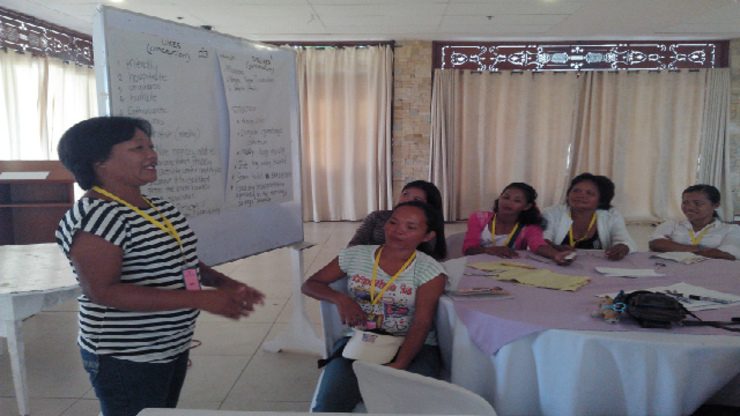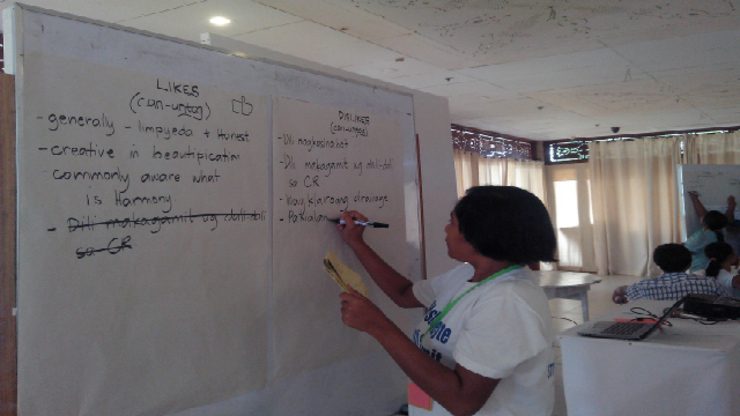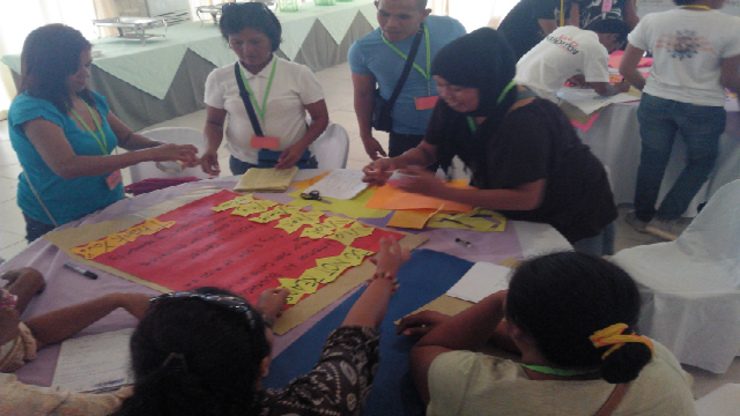SUMMARY
This is AI generated summarization, which may have errors. For context, always refer to the full article.

ORMOC, Leyte – Conflicts and disasters destroy homes, ways of life and, in the process, communities. These also often lead to the formation of new communities as victims evacuate to tent cities, bunkhouses, and other transitional sites.
Community building is vital in ensuring the well-being of individuals, enabling them to make the best out of a less than ideal situation. But building a successful community after a disaster such as Superyphoon Yolanda has its fair share of challenges.
Edward from Can-Untog, a transitional site on the outskirts of Ormoc City in Leyte province lamented before the typhoon hit their area last November 2013, he and his family had already found a reasonably stable community. Now they face a new place and new neighbors.
Nearly 3,500 people are still living in two different transitional sites in Ormoc, managed by International Organization for Migration (IOM) and the Department of Social Welfare and Development (DSWD).
At least 25 camp leaders who were chosen by their fellow bunkhouse residents were recently taught basic community organizing, volunteerism, and communication.
Camp leaders were encouraged to get involved as community organizers within their respective displacement sites. One of the first tasks was for them to identify what kind of community they wanted and the best way to achieve that vision.
“We want our community to continue being peaceful and cooperative,” Can-Untog resident Brenda said.
“We don’t want any trouble inside or people who think only of themselves,” he added.

In the end, the participants made their own simple information materials. The process reminded of the importance of integrating community consultations into the decision-making process.
“Before, we never bothered figuring out what was needed in our camps. We just often did the things that came to mind amongst us leaders,” Concepcion resident Marites said.
“Now we understand that it is important to involve the community via consultations before making decisions for the community,” she stressed.

The Communication with Communities Project aims to put communication at the heart of the IOM. The need for effective, transparent and regular two way communications between affected populations and aid organizations are stressed as it has become a crucial part of humanitarian response.
Community and communication are not merely similar words by accident, they share a heart, and in some sense they borrow meanings from each other.
It is crucial that disaster preparedness initiatives never leave out communities, and more importantly, always involve effective communication. – Rappler.com
Gian Marlon Libot is a Communications with Communities (CwC) specialist in Ormoc, Leyte, central Philippines.
Add a comment
How does this make you feel?
There are no comments yet. Add your comment to start the conversation.